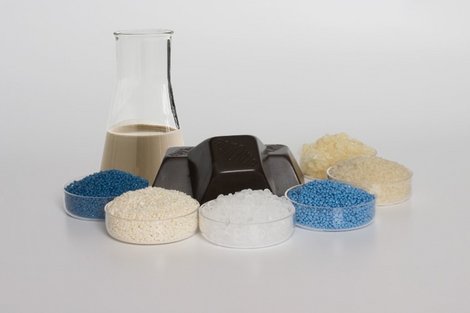A lubricating formula for success: montan wax

The group ROMONTA from Saxony-Anhalt is the world market leader in montan wax from coal
The group ROMONTA is a German success story from Saxony-Anhalt. It has already been producing crude montan wax for 95 years. It obtains the coal that is needed for the production process from its own opencast mine.
In 1922, the industrialist Carl Anton Riebeck founded Montanwerke AG to produce crude montan wax in Amsdorf - located between Lutherstadt Eisleben and the university city of Halle in Saxony-Anhalt. For this, he built upon an old patent dating back to 1897, for the technical process for separating so-called montan wax from coal. The area around Amsdorf offered good conditions for this: large quantities of bitumen-rich brown coal. This was formed from palms millions of years ago in the Tertiary period. Their leaves were covered with wax which protected them from drying out and UV radiation. This wax is now found in coal.
Globally successful for 95 years
Now, 95 years later, this large-scale industrial process still exists at the same site, under the name ROMONTA. It is the world’s biggest producer of crude montan wax, even the only one in Europe. Up to 20,000 tons a year can be produced here, and the turnover of the whole group of companies is currently 60 million euros per year. In addition to the substantial domestic sales, the product montan wax is also exported to countries including Japan, USA, China, Russia and the EU states. The company maintains long-term customer relationships, some of which have existed for 95 years.
Although the production technology has been improved time after time and montan wax is now produced in a modern, high-tech process, the principle of manufacturing has remained the same. “We extract the brown coal from our own open-cast mine,” explains board member Rena Eichhardt. “It is prepared, dried and wetted with a solvent. In this way, we wash the montan wax out of the coal.” This liquid wax, says Rena Eichhardt, is then prepared in different forms - in cubes or granulate or even already processed at the site - depending on the customer’s wishes.
The decisive success factor: Biological
The decisive difference from synthetic waxes is its purely vegetable origin. Its special properties allow its use as a basic material in many industrial applications. It is biological wax, so to speak. The raw substance is a black-brown colour. The long-chain hydrocarbon has a melting point at which the substance changes immediately from a liquid into a solid form. The wax is scratch-resistant and brittle. The properties of raw montan wax make it an all-rounder. Shoe creams, polishes and lubricants, for example, can be manufactured from it; the wax is used in the hydrophobing of building materials, the asphalt industry and casting.
More than 60 percent of the total production of montan wax is bleached. This processing turns the dark untreated substance into a light, almost white hard wax. This increases the range of possible uses substantially. Cosmetics, leather care products, dyes and anticorrosives are just a few examples.
Sustainability through R&D and energy efficiency
ROMONTA, however, also offers made-to-measure products; after all, special applications require waxes with equally special properties. The waxes are optimised in line with their intended purposes. For this, ROMONTA possesses its own research and development department, which is devoted exclusively to product development and application. This is absolutely necessary, explains Rena Eichhardt, in order to have a broad position on the market - because it is changing. “20, 30 years ago, montan wax was still used to produce carbon paper for example. There is now no longer any demand for this, of course. On the other hand, a new application is the use in water-repellent insulating materials.”
The residual coal left over from the manufacturing process is used as fuel in the company’s own mine heating plant, once it has been freed of solvent. With this, steam and electricity are produced and used in the whole manufacturing process; the excess energy is fed into the public grid. “Right from the start, we have adapted to the structural change in Germany. We operate a solar farm and an incineration plant for substitute fuels,” explains Uwe Stieberitz, also a member of the board, “in parallel, we use our already completed post-mining landscapes industrially; among other things, a biogas plant and a wind farm are already in operation.”
Global success with special products
ROMONTA is a success story, a global market leader in the manufacturing of montan wax. “It is a special product. We are market leaders in the manufacturing process, in the price segment, and because we can manufacture it continuously throughout the whole year.” It is possible, says Uwe Stieberitz, to obtain the wax from the bark of a palm tree growing in South America. This is expensive, however, he says, and the yield depends on the success of the harvest. “We, on the other hand, produce reliable quantities 365 days a year!”
The company has successfully made it through some low points. The upheaval after the fall of the Berlin Wall was one of these - 100 million euros were invested after this until 1996. The initial privatisation failed because of fraudulent schemes on the part of the then partners. The second privatisation took place in 2001, in the form of a management buy-out. The ROMONTA group of companies, as it has been called since then, is strongly rooted in the region. It currently provides work for 400 people; the owners and top management also live and work there. From the start of the production chain - the extraction of coal - to the end of the sales process - the paying of taxes - the company is a true success story from Saxony-Anhalt.
Author: Anja Falgowski

